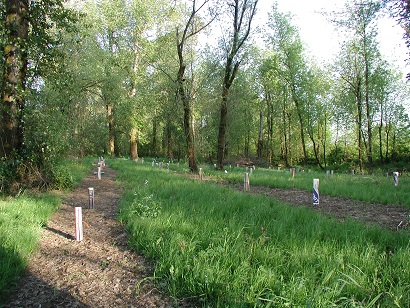Brad Withrow-Robinson, Forestry & Natural Resources Extension Agent, Benton, Linn and Polk Counties.
Pretty much every landowner I know has a weed issue.
 Some are fairly short term and narrow, such as controlling common weeds in a new tree planting. Others are much longer term and less defined, such as keeping invasive species at bay in the woodland, or perhaps encouraging native plants in a meadow or streamside restoration.
Some are fairly short term and narrow, such as controlling common weeds in a new tree planting. Others are much longer term and less defined, such as keeping invasive species at bay in the woodland, or perhaps encouraging native plants in a meadow or streamside restoration.
There are multiple approaches to weed management, including preventing new weed introductions, mechanical or physical control such as mulching or mowing and the use of herbicides. Most people use a mix of two or more of these approaches, with many including herbicides as one of the methods they use.
Here are some key resources to help you manage your weed issues.
 Invasive Weed Identification and Management EC 1563
Invasive Weed Identification and Management EC 1563
It is important to know the enemy, and this is a good place to start, beginning with the 3-page introduction. This publication goes on to describe the identifying characteristics, origin, habitat, ecology and management strategies for selected invasive weeds in the Pacific Northwest. This list is not inclusive of all invasive weeds, but focuses on the most dominant or potentially invasive species that plague us. Check PNW Weed Management Handbook for current herbicide recommendations.
The Nature Conservancy’s Weed Control Methods Handbook
A useful resource for many types of landowners, the Weed Control Methods Handbook: Tools & Techniques for Use in Natural Areas provides detailed information about weed control techniques including manual and mechanical methods, grazing, prescribed fire, biological control, and herbicides. Check PNW Weed Management Handbook for current herbicide recommendations.
Continue reading →







